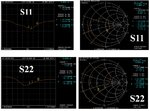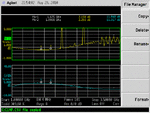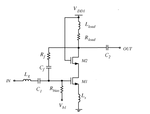yixiusky
Member level 2
Hello everyone
I would like to ask one question
I designed one LNA works frome 1.8 to 2.2 GHz. After meausrement, the input and output matching are ok, but the gain shiift to 1.5GHz. I could not think the reason. Could you help me?
Thank you very much.
I would like to ask one question
I designed one LNA works frome 1.8 to 2.2 GHz. After meausrement, the input and output matching are ok, but the gain shiift to 1.5GHz. I could not think the reason. Could you help me?
Thank you very much.


